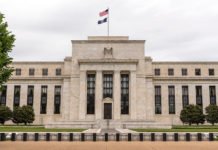The minutes for the FOMC meeting in November shows that policymakers were cautiously optimistic about the economic recovery and the impacts of the monetary policy tools on the economic outlook. As negative interest rate has been ruled out, the Fed’s future policy tool is dependent on asset purchases (QE). We are not surprised to see that QE was a major topic at the meeting. While members agreed that adjustment could be made on the size of purchases and the average maturity, they were not in a hurry to make the changes. Rather they were more interested in improving communication with the public about potential changes through guidance in the policy statement.
On economic developments, the members reiterated that “the uncertainty surrounding the economic outlook as quite elevated” and warned that “the possibility of a further resurgence of the virus” could undo the economic recovery achieved over the past months. Note, however, that market developments since the November meeting have been been mixed. While uncertainty in US election has been removed, there has been resurgence in the coronavirus cases. During the period, there are also good news about vaccine
The minutes revealed that members had in-depth discussions about the asset purchase program. They generally agreed that “the current pace and composition as effective in fostering accommodative financial conditions”. The market has been anticipating that the Fed would adjust the size of monthly purchase and the average maturity of bonds. It appears that the Fed is not urgent to make adjustment. The members saw the “ongoing careful consideration” of changes to asset purchases as “appropriate”. They indicated that “circumstances could shift” to warrant changes in the “pace and composition” of asset purchases. However, “a few” of the members were “hesitant” to make changes in the near term due to elevated economic uncertainty. While judging that “immediate adjustments to the pace and composition of asset purchases were not necessary”, the members “recognized that circumstances could shift to warrant such adjustments”.
The Fed also addressed the changes that BOC made regarding its asset purchase program. The minutes revealed that “several participants” judged that the Fed “could maintain its current degree of accommodation by lengthening the maturity of the Committee’s Treasury purchases while reducing the pace of purchases somewhat”. However, “communication to the public” is crucial so as to “avoid the misperception that the reduced pace of purchases represented a decline in the degree of accommodation”.
Concerning communication, many members suggested “the possibility that at some point the Committee might convey additional guidance about the future path of asset purchases”. The minutes revealed that “most” participants favored moving to “qualitative outcome-based guidance” that would involve tapering and ending purchases “sometime before” increasing the funds rate.
For the December meeting, we expect the Fed to introduce outcome-based forward guidance by linking asset purchases to economic conditions. It is also possible that the Fed would extend the average maturity bond purchases.













